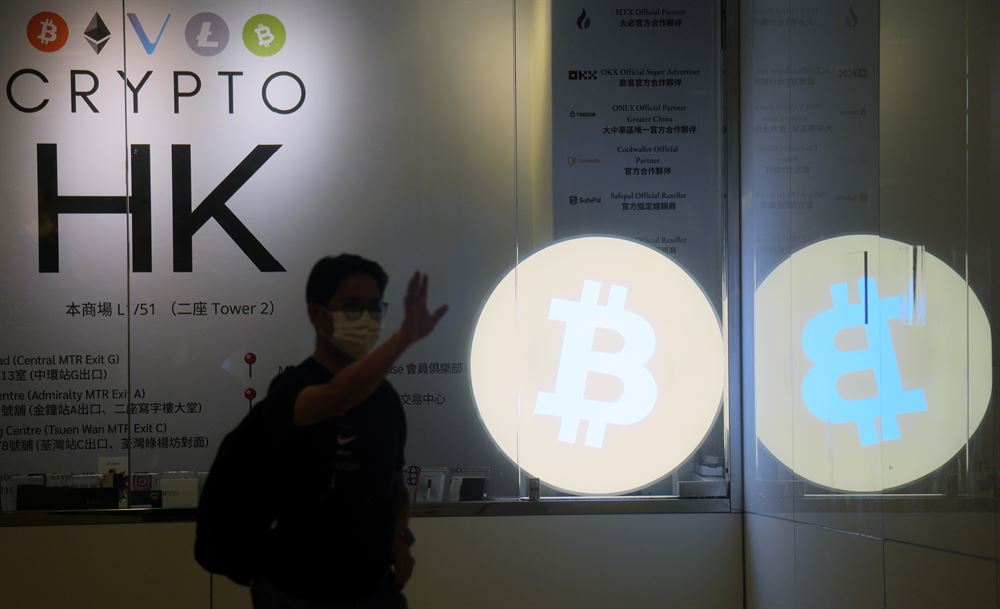HK's stablecoin bill seen to back cheaper, faster cross-border payments


Game-changing alternative
Merchandise trade volumes through Hong Kong — the world's seventh-largest trading hub — reached $1.35 trillion last year, on par with those of major economies like France and the United Kingdom. Nearly half of the trade value came from reexports, with an average of over $3.7 billion worth of goods flowing through the city daily en route to international markets.
Behind this trade prosperity lies a persistent problem of cross-border payment inefficiencies, one that isn't unique to Hong Kong. Worldwide, cross-border payment volumes are expected to exceed $250 trillion by 2027 — a 70 percent increase from a decade ago — according to the Bank of England.
At present, most of the payments rely on the decades-old SWIFT system, which involves a cumbersome process requiring the participation of the remitting bank, the receiving bank, and at least one correspondent bank. For example, when transferring money from China to the US, a Chinese bank uses SWIFT to send payment instructions to a US lender, but the actual transfer is handled by intermediary banks. This fragmented process leads to delays, high costs and limited transparency.
According to Paul McSheaffrey, senior banking partner for Hong Kong at KPMG China, intermediary banks typically charge 50 to 100 basis points per transaction, which means that depending on the number of middlemen involved, fees could reach $2.5 trillion globally by 2027, even with the exclusion of currency conversion costs and interest losses from delayed payments.
These inefficiencies hit individuals as much as businesses. An international student recently posted on social media to complain about having sent 2,400 euros ($2,770) from China to Hungary and incurring a 135 yuan ($18.80) remittance fee and a telecommunications charge of 45 yuan, or 80 basis points collectively, on top of undisclosed fees deducted by the receiving bank.
Against this backdrop, stablecoin is being heralded as a potential alternative to traditional cross-border payment systems, offering solutions to long-standing inefficiencies.
For example, the USDC stablecoin that's pegged to the US dollar on a 1:1 basis and is the second-largest stablecoin by market share, has established several application scenarios. Its issuer, Circle, is working with remittance provider BCRemit, enabling Filipino migrant workers in places like the US and the UK to send money home at reduced costs and faster settlement times.
Moreover, Circle expanded its reach in April by partnering with African digital payments provider, Onafriq, to integrate USDC-powered settlement solutions into the latter's network. According to Onafriq, over 80 percent of intra-African payments are traditionally routed through correspondent banks outside the continent and settled in foreign currencies, incurring more than $5 billion annually in transaction fees.
Using stablecoin could cut fees per transaction from tens of dollars to one dollar, and shorten the time from days to minutes, a research report by TF Securities shows.
Looming challenges
Despite its potential, the current global stablecoin market value remains small. JPMorgan strategists led by Teresa Ho said in a recent report that stablecoin accounts for less than 1 percent of global money flows. They expressed skepticism over the market's ability to grow significantly in the near term, unlike the optimistic projections of US Treasury Secretary Scott Bessent, who told a Senate hearing in June that the stablecoin sector could reach $2 trillion by 2028 — an eightfold increase from its current $250 billion valuation.
Several factors are holding back stablecoin's adoption, including limited demand in some places, regulatory challenges, and an underdeveloped infrastructure.
Stablecoin's appeal lies in its ability to deliver fast, low-cost payments. However, structural differences in cross-border payment systems limit its advantages in certain regions, says Miao Yanliang, chief strategist of Research Department at China International Capital Corp, in an interview with China Daily in early July.
In regions like the European Union, the Single Euro Payments Area has created an integrated system for remitting money across borders at minimal cost.
Similarly, payments between the Chinese mainland and Hong Kong are facilitated by initiatives like the newly launched Payment Connect, which allows residents to make near-instant small-value transfers by using only the recipient's phone or account number.
Miao observes that the demand for stablecoin-based payments is likely to be stronger among businesses with high-frequency cross-border needs, such as e-commerce platforms and multinational corporations, and companies in countries with unstable currencies or weak financial infrastructure.
Moreover, while stablecoin's decentralized nature is often touted as an advantage, it exerts pressure on regulators. Unlike fiat currencies, whose supply is managed by central banks, stablecoin lacks such a "gatekeeper" to oversee supply or intervene during price volatility, says Hui Kai-lung, acting dean of business and management at the Hong Kong University of Science and Technology.
He notes that once stablecoin enters circulation on a blockchain, transactions occur directly between users' wallets, bypassing intermediaries, making it almost impossible for regulators to monitor or block suspicious transactions.
This creates a dilemma between growth and security. Stablecoin needs ample liquidity to meet future demand for large-scale trade and international settlements, but increasing supply will exacerbate regulatory challenges and make it harder for authorities to maintain oversight.
Hong Kong has taken a cautious approach to regulating stablecoin adoption. While multiple companies are interested in obtaining licenses, HKMA Chief Executive Eddie Yue Wai-man says only "single-digit" licenses will be issued initially.
Given this measured attitude, an anonymous industry source expects the use of stablecoin in trade payments to start within six to 12 months.
Meanwhile, the infrastructure or eco-system supporting stablecoin use is still in its infancy, and will take time to build, especially for the transformation of traditional financial institutions like banks.
McSheaffrey says that even in the world of stablecoin, banks will remain essential as "trusted intermediaries", particularly for business-to-business payments, as corporate clients demand high levels of security, compliance and dispute resolution — areas in which banks excel.
To that end, banks are beginning to explore stablecoin-related offerings. In June, JPMorgan launched JPMD — a tokenized representation of US dollar deposits on the public blockchain of cryptocurrency exchange Coinbase. Unlike publicly available stablecoin, JPMD is accessible only to the bank's institutional clients.
Despite the challenges, stablecoin can play a vital role in future global trade, and Hong Kong's move to regulate them has opened the door to faster, cheaper cross-border payments.
























